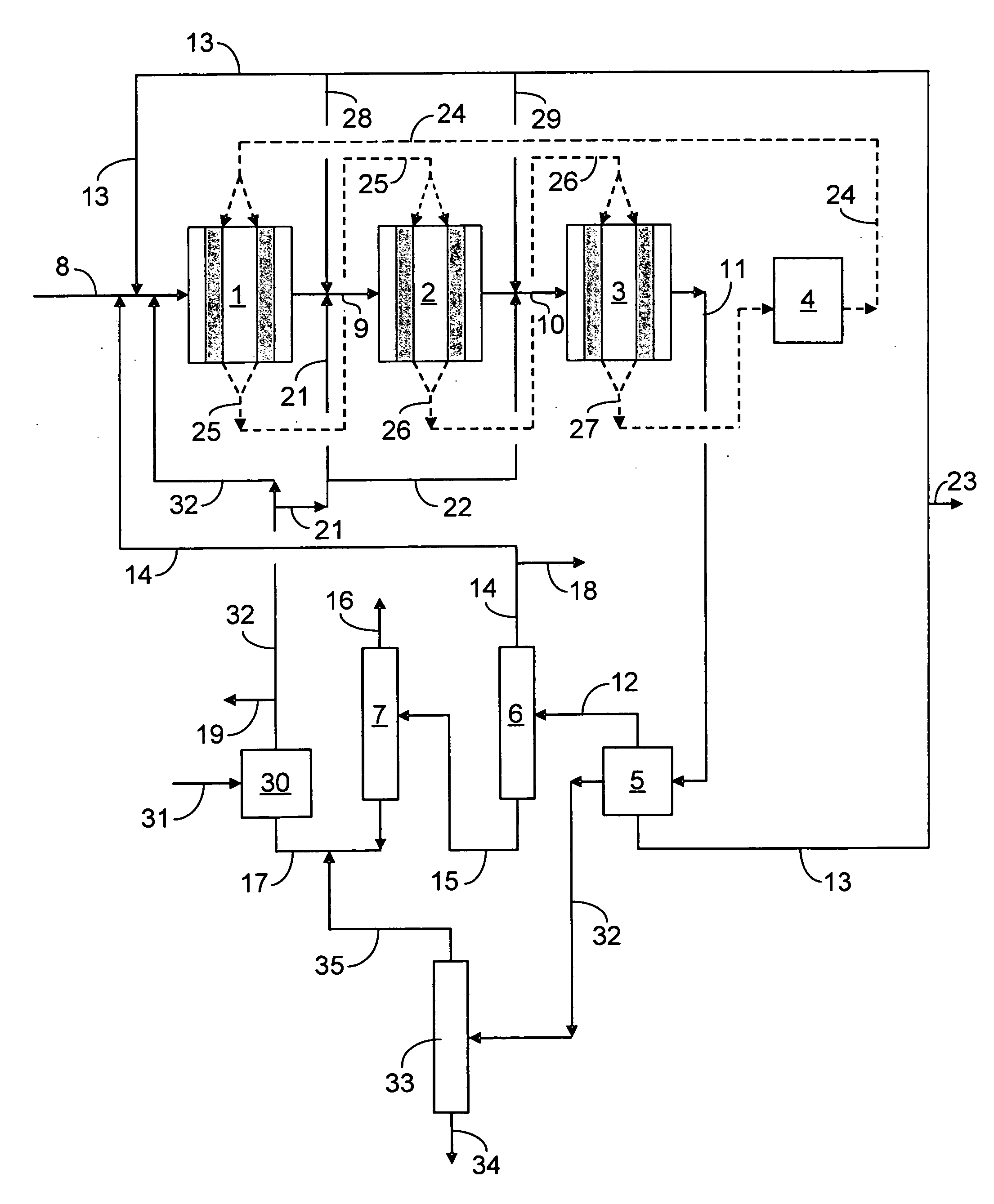Conversion of oxygenate to propylene with selective hydrogen treatment of heavy olefin recycle stream
a technology of heavy olefin and hydrogen treatment, which is applied in the direction of hydrocarbon preparation catalysts, bulk chemical production, organic chemistry, etc., can solve the problems of substantial additional loss of dme that was not considered in germany, additional loss, and inconvenient market availability of this gas, so as to maintain oxygenate conversion and propylene selectivity at higher levels, and achieve the effect of realizing and technically feasibl
- Summary
- Abstract
- Description
- Claims
- Application Information
AI Technical Summary
Benefits of technology
Problems solved by technology
Method used
Image
Examples
Embodiment Construction
[0020] In the instant OTP process the feedstream comprises one or more oxygenates. The term “oxygenate” is employed herein to include aliphatic alcohols, ethers, and carbonyl compounds (e.g. aldehydes, ketones, carboxylic acids, and the like) and mixtures of these materials. The oxygenate feedstock preferably contains at least one oxygen atom and about 1 to 10 carbon atoms, and more preferably contains from about 1 to 4 carbon atoms. Suitable oxygenates include lower straight or branched chain alcohols, and their unsaturated counterparts. Representatives of suitable oxygenate compounds include methanol, dimethyl ether (DME), ethanol, diethyl ether, methylether, formaldehyde, dimethyl ketone, acetic acid, and mixtures thereof. A preferred feedstream contains methanol or dimethylether and mixtures thereof.
[0021] In the OTP conversion step of the present invention, the oxygenate feed is catalytically and selectively converted to propylene and by-product hydrocarbons containing aliphat...
PUM
| Property | Measurement | Unit |
|---|---|---|
| Temperature | aaaaa | aaaaa |
| Time | aaaaa | aaaaa |
| Substance count | aaaaa | aaaaa |
Abstract
Description
Claims
Application Information
 Login to View More
Login to View More - R&D
- Intellectual Property
- Life Sciences
- Materials
- Tech Scout
- Unparalleled Data Quality
- Higher Quality Content
- 60% Fewer Hallucinations
Browse by: Latest US Patents, China's latest patents, Technical Efficacy Thesaurus, Application Domain, Technology Topic, Popular Technical Reports.
© 2025 PatSnap. All rights reserved.Legal|Privacy policy|Modern Slavery Act Transparency Statement|Sitemap|About US| Contact US: help@patsnap.com


